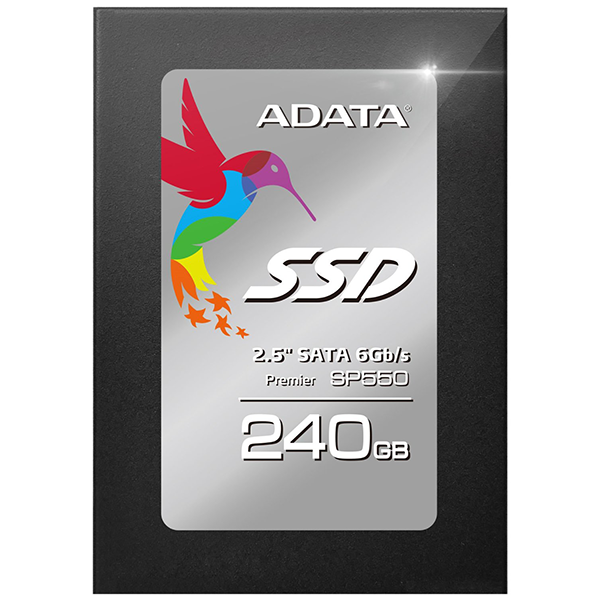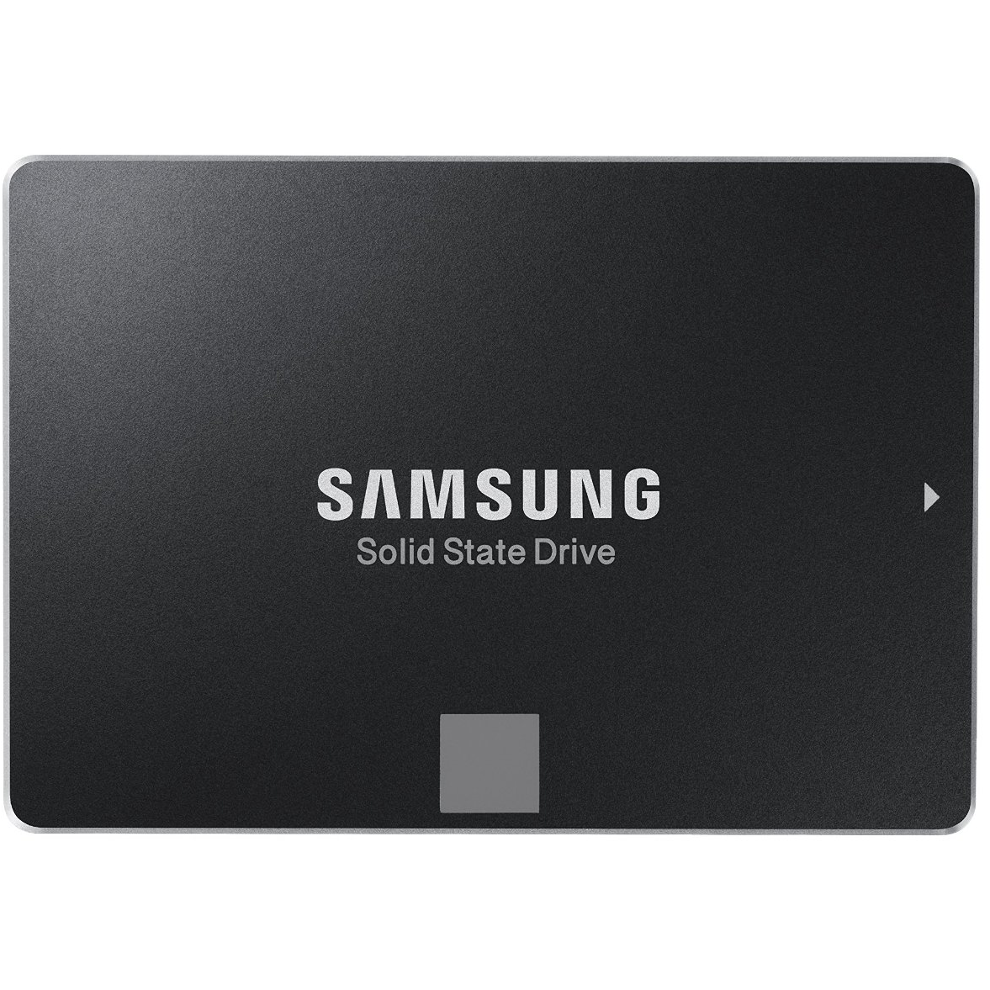Longsys Foresee S500 SSD Review
Longsys, the largest SSD manufacturer in China, sent over a new client SSD armed with Toshiba's triple-level-cell NAND flash and a controller from Silicon Motion that you'll be seeing a lot of over the next year.
Why you can trust Tom's Hardware
Four-Corner Testing
Comparison SSDs
We assembled a handful of TLC-based SSDs for today's comparison, including the Crucial MX200 with Micron's 16nm MLC. Micron plans to release 16nm TLC in 2016, which should further reduce the cost of flash. But its 16nm MLC was designed to combat the threat from Samsung's and Toshiba's three-bit-per-cell memory.
To read about our storage tests in-depth, please check out How We Test HDDs And SSDs. Four-corner testing is covered on page six.
Sequential Read
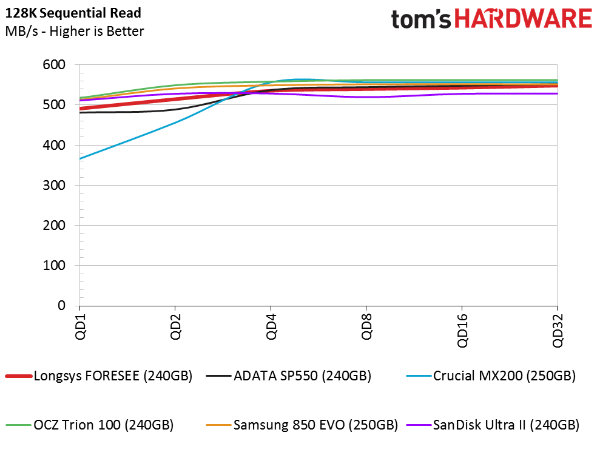
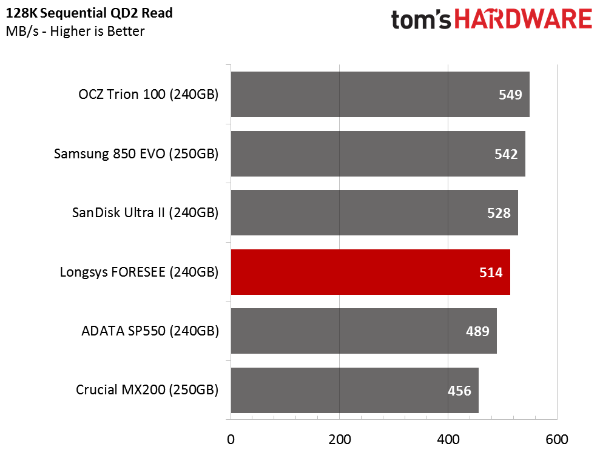
TLC-based drives don't have a problem reading data back from flash. Our testing shows that TLC is comparable with MLC when it comes to sequential read performance over SATA. It's actually a little surprising to see the TLC-equipped SSDs outperforming our only MLC-based drive at a queue depth of two.
But Longsys' S500 falls to the lower end of the graph with two outstanding commands. It still delivers well over 500 MB/s though, so it'd take a discriminating enthusiast to notice a difference.
Sequential Write
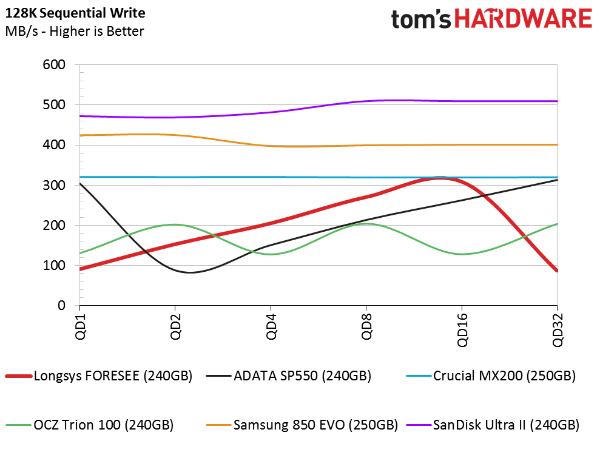
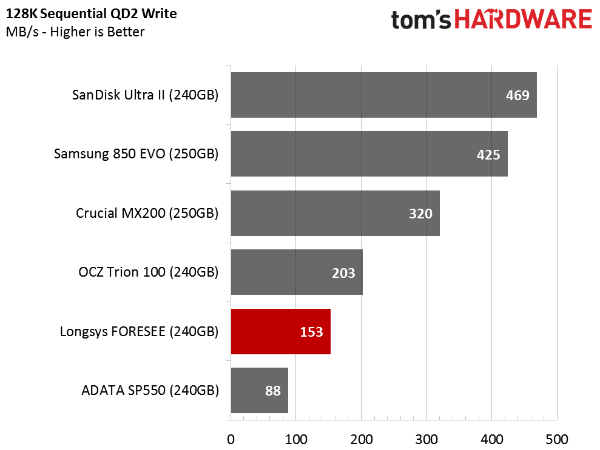
Our sequential write performance chart shows a lot more variation. This is due to TLC-based products relying heavily on an emulated single-level-cell cache. The problem with this buffer is that it's small, so it fills up quickly. Our testing involves a reasonable amount of conditioning, which allows us to push beyond best-case conditions and present the performance you'll encounter in the real world.
Random Read
Random read performance is lower on the Longsys S500 and the Adata SP550, both of our SM2256-based contenders.
Of the numbers presented in this section, the one we value most involves random reads at a queue depth of one. It's an important metric that directly relates to your user experience. Longsys' Foresee S500 is slightly faster than Adata's SP550 and OCZ's Trion 100. But it appears well below the QD1 performance available from Samsung's 250GB 850 EVO, though.
Get Tom's Hardware's best news and in-depth reviews, straight to your inbox.
Random Write
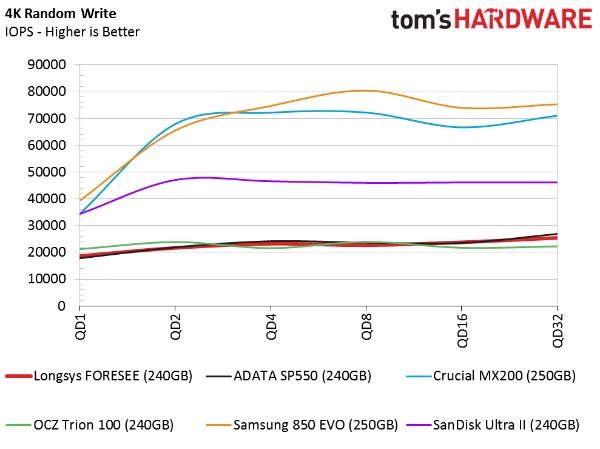
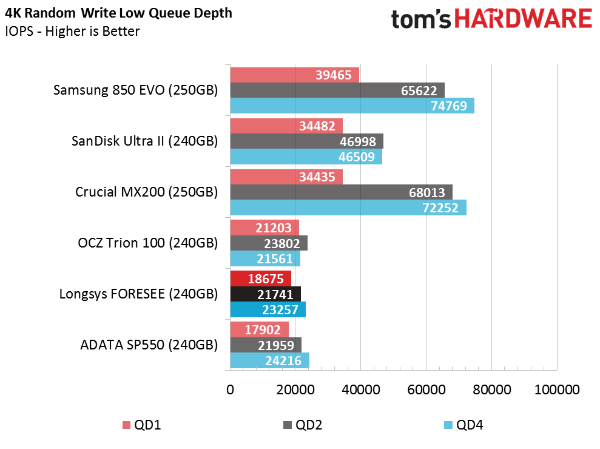
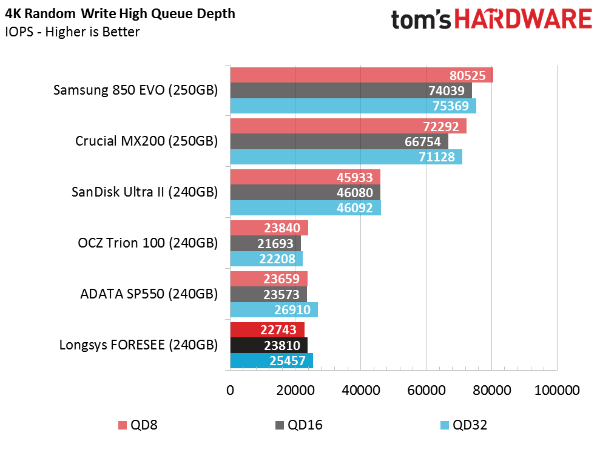
The random write tests show even more separation between the best and worst products. Samsung's 850 EVO manages to compete with the 16nm MLC-based Crucial MX200. SanDisk's Ultra II sits on an island in the middle, while the Longsys, Adata and OCZ drives trail.
Under normal use, random writes from multitasking stack easily. Because of this, we like looking at the numbers at a queue depth of two or four most of all. A wide separation between our represented models make it easy to identify two distinct performance groups.

Chris Ramseyer was a senior contributing editor for Tom's Hardware. He tested and reviewed consumer storage.
-
kalmquist The Silicon Motion's SM2256 based drives have the dubious distinction of being slower than what came before. I'm hoping that once companies other than Samsung get 3D NAND into mass production, we will see SSD's priced like the Longsys' Foresee S500, but with better performance.Reply
-
Jeffs0418 Replywonder how many backdoors they included...
I was thinking the same thing. Just the possibility is a deal breaker for me.
I just hope the (Korean) Samsung 850 EVO I purchased this year (Made in China)
has no unwelcome firmware inside. -
photonboy The PRICE is right where it should be. It doesn't perform as well as slightly more expensive drives.Reply -
photonboy TbsToy,Reply
How do you know there is no support? Do you read Chinese?
These exist in China, so I'm not sure why you would expect to easily find the support site. -
TbsToy Reply16962018 said:TbsToy,
How do you know there is no support? Do you read Chinese?
These exist in China, so I'm not sure why you would expect to easily find the support site.
Well, being in Los Angeles California USA and an English speaking American, I haven't ever felt the need to learn to read and speak Chinese just to be able to communicate with an unfindable Chinese support site for some substandard SSD that might not exist a month from now with a site ya can't even find. I can walk to Intel and with no time, and with no language or communication or warranty or shipment issues back and forth.. So I agree with you cuz ya might not have any usable support like the many SSD vendors have here. That shouldn't deter any potential buyers though, right, cuz it is cheap and ya wanna sell em, Right?
Walt Prill -
hannibal I just have to wonder, if most of the readers actually did read the article. This is not about Longsys, this is about controller, that will be the dominant controller in the next two years. Expect to see these in low price Samsung, Munchkin, Kingston etc ssd drives in near future.Reply
